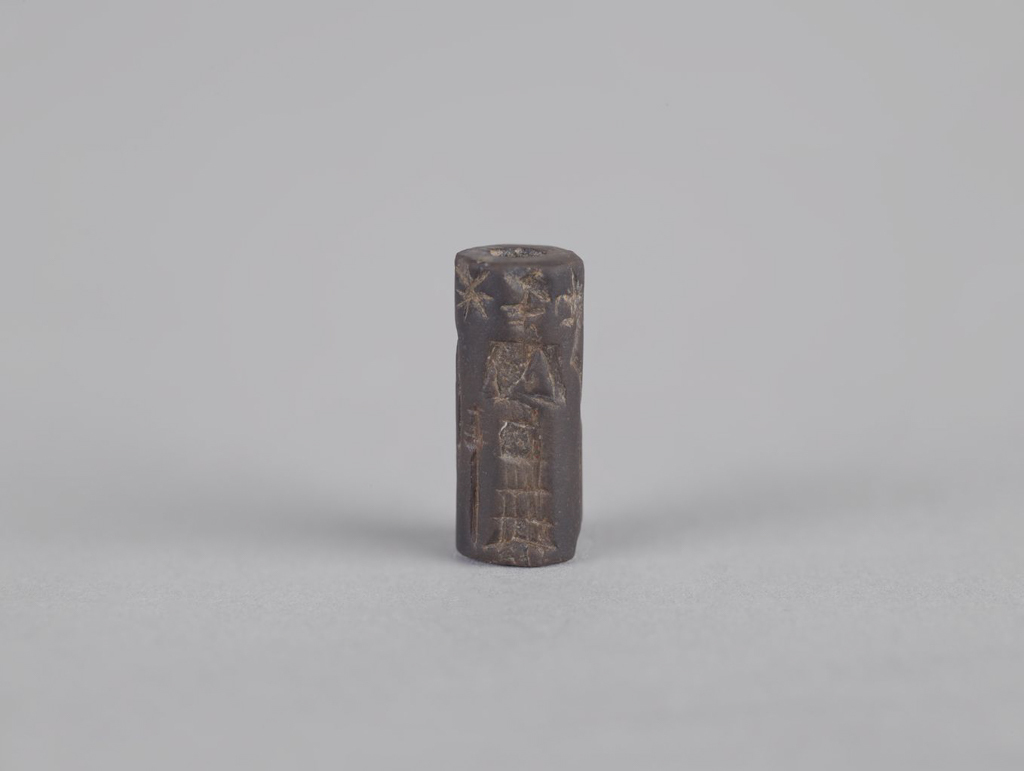This slender cylinder seal carved into hematite represents a traditional intercession scene with three standing figures and dates to the Isin-Larsa or Old Babylonian period (ca. 2000–1600 BCE) of ancient Mesopotamia. Wear on this seal obscures some of the features of the figures, particularly along the upper portion of the scene, but the overall subject is clear. A robed figure, most likely a god, stands facing left, while two other figures approach him. The central figure, wearing a short kilt and holding an indeterminate object (probably a mace) against his chest, represents a king based on his attire and stance. Between these two figures a large spade symbol appears: the symbol of the chief Babylonian god, Marduk. The third figure, wearing a long, flounced dress, stands facing frontally with her hands clasped at her waist or possibly holding an object. In front of her a tall plant with fronds appears, and behind her there is a large animal-headed staff or standard that frames the scene. She most likely represents a protective goddess known as a Lamma, commonly depicted in intercession and presentation scenes. In the upper part of the field, the two star symbols may represent two other Babylonian deities: Shamash, the sun god, and Ishtar, a goddess of war and love associated with the planet Venus.
This intercession scene is a variation of a presentation scene, a standard formula in which a seated deity (usually at the right of the image) is approached by an intermediary goddess figure leading a worshipper. An example of a standard presentation scene can be seen on an earlier cylinder seal in the Menil Collection (1997-10), which dates to the Third Dynasty of Ur (2112–2004 BCE). In an intercession scene, typically all figures stand, and the protective or suppliant goddess does not lead a figure to the deity, but rather stands behind him or her in a supportive capacity.
It is easiest to envision the full scene by looking at a seal impression. To create a seal impression, the stone is rolled across wet clay. In antiquity, the clay could have sealed a jar or a door, or even a tablet with administrative records. The seal imagery impressed and then preserved on the dried clay would have functioned as official approval or record of the contents. Seals and their impressions, known as sealings, facilitated long-distance trade, temple operations, and legal proceedings. They were particularly useful as Mesopotamia was not unified and was largely controlled by powerful individual city-states at different times. The ruling periods are usually named for the city-states in control, so for this seal either Isin and Larsa, or Babylon.





